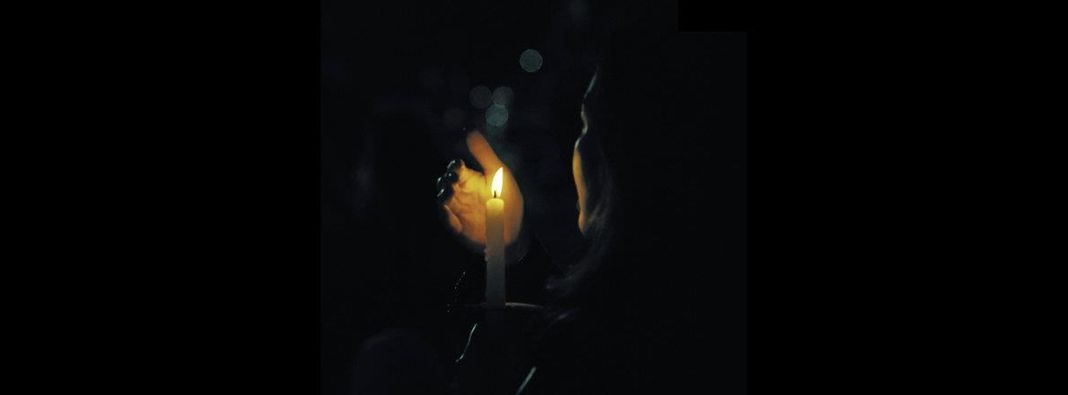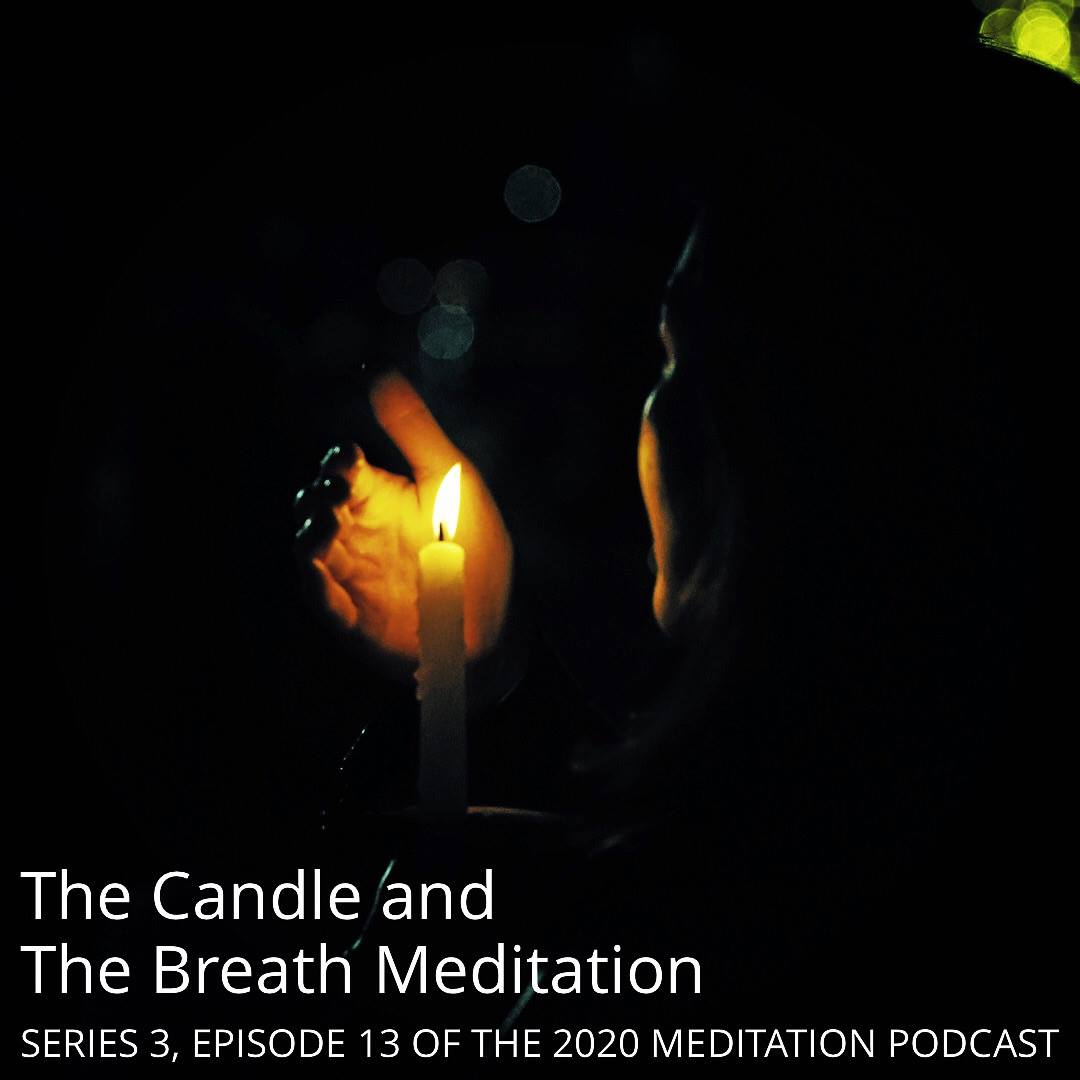The Candle and The Breath

This is a practice popular with new meditators who find it difficult to focus because of their busy minds.
Visualising the candle
This is a visualisation meditation but don’t be concerned if you find visualisation tricky. Visualisation is difficult for about 50% of meditation students but this meditation does not require the construction of a clear, detailed image in the mind. A dim image or an image that collapses and is continually reconstructed is fine.
The Candle
There are two parts to the candle and the breath. The first is to visualise a candle. You just need to close your eyes and imagine it in your mind.
If you are not a visual person, you may find that visualising a candle is extremely difficult and either you can’t see much in your mind or the image keeps collapsing. This is fine. Rebuild it in your mind or just try to stay focused on the dim image of the candle flame. It can help if you light a candle for a few moments and use that to help you construct the image.
If you are a visual person, you need to work hard too. Your job is to construct a highly detailed image. As detailed as possible. Imagine an ornate candle holder and focus on the details of the candle such as the wax dripping down the side and puddling in a transparent pool the top of the candle while reflecting the flickering light of the candle. Try to create the details in your mind as much as possible and move your mind from one detail to another.
The Breath
The other part of the meditation is following the breath which is a basic mindfulness meditation. It is incredibly simple. Focus your attention on your breath, when the mind wanders, return your
attention to the breath and repeat. That’s it. It's the simplest thing in the world but it's often difficult to stay with the practice as the mind will wander. Ideally you should focus on the sensation of the breath entering and leaving the nostrils as that feeling is usually more noticeable. If you find the sensation of the breath in the nostrils is uncomfortable or if don’t really notice much feeling, you can focus on the breath wherever it is comfortable for you such as, noticing the filling and emptying of breath in the lungs, the rising and falling off the chest or the feeling of breath as it hits the back of our throat.
The Candle and The Breath meditation
Begin by focusing on the breath. Notice the sensation of the breath. When the mind begins to wander, instead of returning our attention to the breath as we do in the traditional following the breath meditation, move the focus of attention to the candle which we visualise at head height a foot or two in front of us. Construct as much of an image of the candle as you possibly can with as much detail and colour as possible. it helps to notice the flickering of the candle. Focus your attention on the candle, maintaining, exploring and adding details until your mind begins to wander. At this point return your attention to the breath and continue from there.
Order of activities in the candle and the breath meditation
- Focus your attention on the breath.
2. When the mind begins to wander, move your focus to the candle.
3. When the mind begins to wander, move your focus to the breath.
4. Repeat.
Duration of the movement between the candle and the breath
You can move your attention back and forth either when you notice the mind wandering or after a number of breaths - usually about 5 or 6. With the first option you are intervening once the mind has wandered, with the second one you are keeping one step ahead of the thoughts by noticing how many breaths it takes before the mind wanders and moving ‘before’ you reach that number of breaths.
Additional elements for stubbornly busy minds
The simple version of the candle and the breath meditation will be sufficient for many people to silence the thoughts but for others we can add to the cognitive load and silence the thoughts. These are listed below
Flickering of the candle in time to the breath
When you focus on the candle, notice how the candle flickers towards you when you breathe in, and away when you breathe out. This way you can be aware of the breath in the back of your mind when you are focusing on the candle.
Noticing the candle flickering while we follow the breath
If you use the above technique ‘ flickering of the candle in time to the breath’, you can notice the candle’s flickering as you focus on the breath as a background experience.
Counting the breaths during the candle and the breath
If you use the above technique ‘ flickering of the candle in time to the breath’ you always have access to the breath in you mind, so you can count the breaths throughout the meditation. The way to do this is by counting from one to ten with each breath, when you reach ten, return to one. When you lose count, move your attention from the candle to the breath or from the breath to the candle and continue.
Moving the eyes behind closed lids
As you imagine the candle directly in front of you at head height, you can move you eyes from looking down at the breath, up to looking directly in front of you at the candle and back again behind closed lids. This helps to focus attention on the current element of the meditation.
Listening to the breath
If you are in a quiet place, it can help to listen to the breath as well as notice the sensation of the breath. This helps to maintain your focus.
How to use The Candle and The Breath in your practice
Our goal from this practice is to cause the incessant, noisy train of thoughts to subside. There may be many reasons for this. you may just wish the mind to shut up. Your mind may be spinning out of control as you try to get to sleep or you might be frustrated by the busyness of the mind when you try other meditations. Like all meditations, you need to give it time to become an expert at it. You can mix and match all of the
How/Why it works
We have a common illusion that we can switch our attention in an instant. This is not the case. What we can do is refocus our vision incredibly quickly from one element of our visual experience to another but when we move our attention from one sense to another or from one intensive element of our experience to another, there is a significant lag of several seconds. The more heavily focused we are on an experience, the slower it is for us to refocus on something else. This is why it can be frustrating when we are concentrating and we are constantly interrupted. In The Candle and The Breath meditation, we are moving from noticing our breath, using a part of the brain called the insula, to an intensive process of visualisation which uses the visual cortex. These are both quite unusual experiences for us to focus on if we are new to meditation. We need to both learn how to do these things and they are also cognitively intensive. I imagine that plugging someone into an MRI scanner while performing this meditation, we will be able to see these totally distinct parts of our brain activating in turn.
Because of the cognitive load and the lag, there is no room for thought. We are crowding the thoughts out by exercising other areas of our brains. We are crowding out our thoughts for the duration of the meditation.
This is a powerful practice and is worth spending the time to learn.



Comments ()